
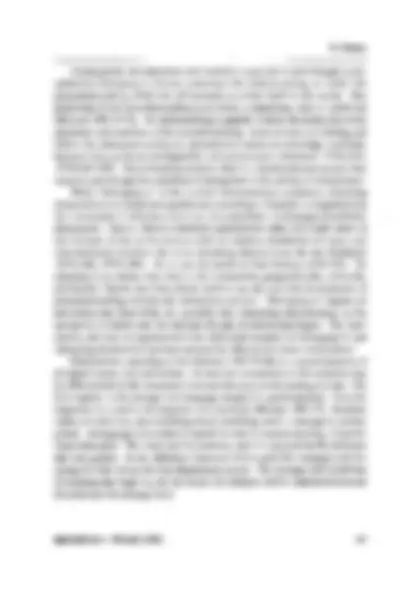
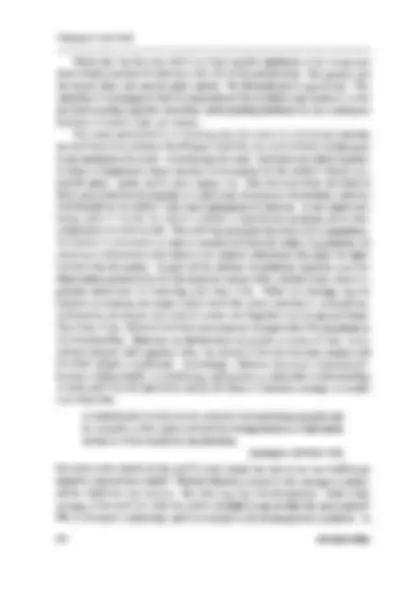
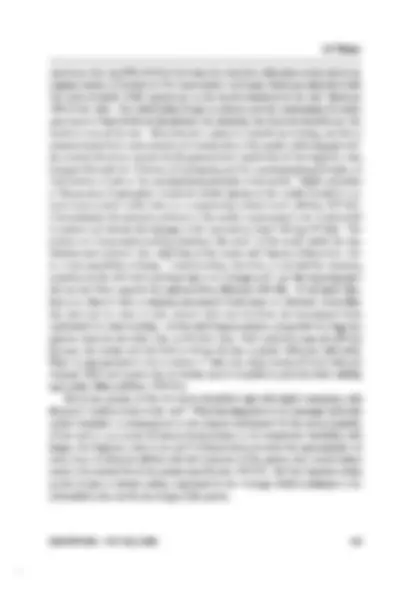
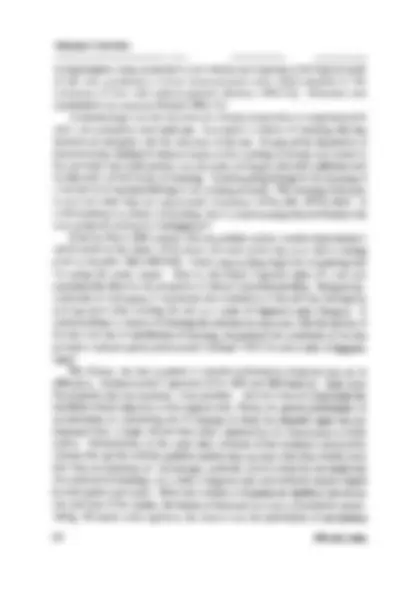
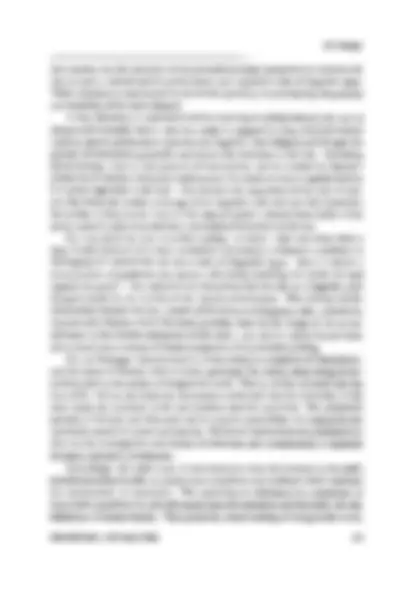
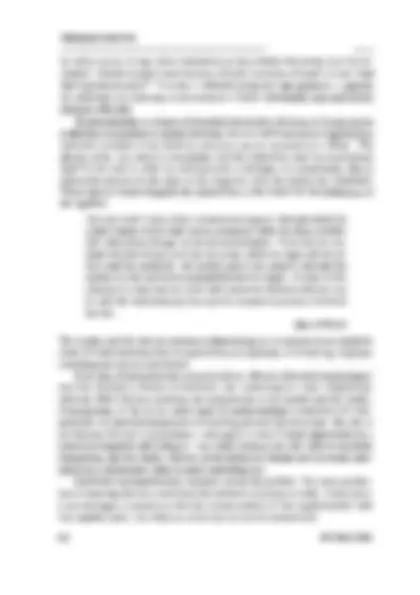
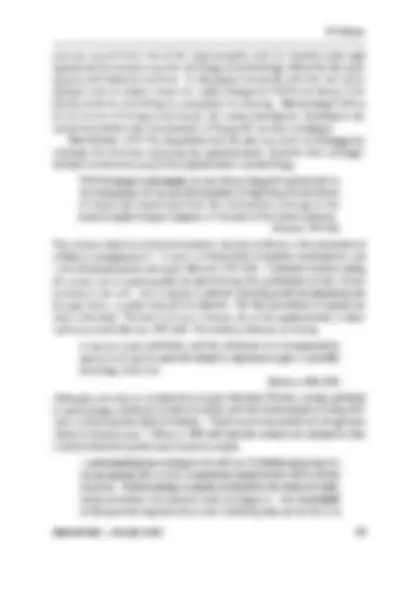
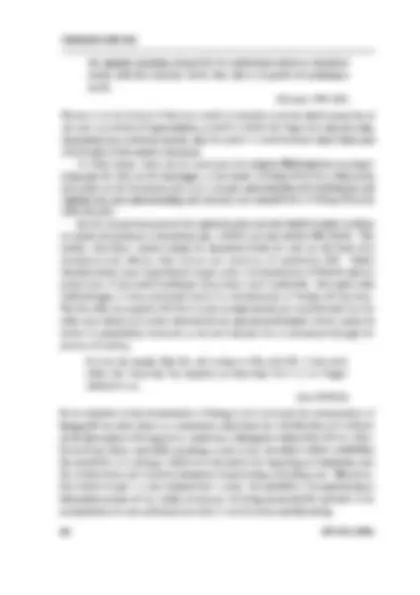
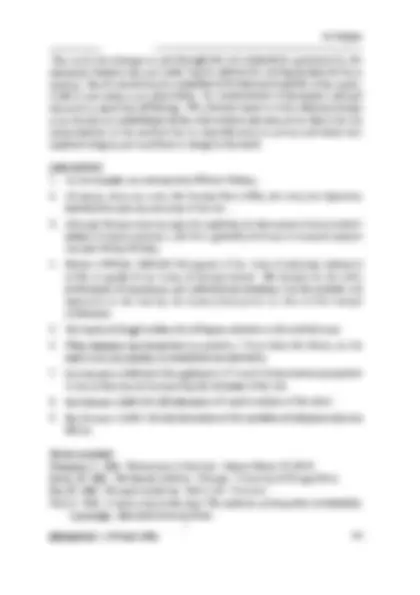


Study with the several resources on Docsity

Earn points by helping other students or get them with a premium plan


Prepare for your exams
Study with the several resources on Docsity

Earn points to download
Earn points by helping other students or get them with a premium plan
Community
Ask the community for help and clear up your study doubts
Discover the best universities in your country according to Docsity users
Free resources
Download our free guides on studying techniques, anxiety management strategies, and thesis advice from Docsity tutors
Abstract 'Shakespeare in the bush' and encountering the other in the herme neutical dialectic of belonging and distanciation 'Shakespeare in the Bush' is an ...
Typology: Study notes
1 / 16

This page cannot be seen from the preview
Don't miss anything!










H C W ae tjen San Fnmdsco Theological Semiiuiy Visitiiig Professor Univcnity of Pretoria
Abstract ‘Shakespeare in the bush’ and encountering the other in the herm e neutical dialectic of belonging and distanciation ‘Shakespeare in the B ush’ is an account o f an anthropologist’s herme neutical experience among the Tiv people o f Nigeria that serves as an illustration o f a hermeneutical circle which results in transforming the otherness o f a text into the sameness o f the prejudices artd traditions projected by the preunderstanding in order to understand. This essay p o ses the hermeneutical objective o f validity in interpretation by advocating an encounter with the otherness o f the text that is orientated to the speech performance o f the author, as it is conveyed by the textual structures o f the implied author and the implied reader. Heidegger’s artd Gadamer’s ontological condition o f being-in-the-world and its projection o f under standing are acknowledged as the only legitimate point o f departure fo r interpretation. I f alienating distanciation is to be evoked by an ‘effective historical consciousness’, a text must be read with the ‘irony o f interpre tation’ that interacts with it, the text, as both a speech performance (pa role) and a linguistic code (langue).
Understanding is not simply a way of knowing; it is a priori a way of ‘being-in-the- world’. This, in essence, is the paradigm shift that herm eneutics has undergone during the past seventy years as a result of M artin H eidegger’s unveiling of the ontological conditions of understanding. The fundamental reality of hum an exis tence is not ‘being with’, an orientation that would imply the question of the other and move the problem of understanding in the direction of epistemology (Rlcoeur 1991:65-66). It is instead the reality of being-in-the-world, a condition that involves ‘the power to be’ which makes understanding possible. Dasein, with its Heideg- gerian characterization of ‘being thrown’ into a particular historical context with all of its traditions, norms and conventions, ‘has already projected itself and it remains in projection as long as it is’ (Heidegger 1927:145; 1962:185). U nderstanding is primordially this projection of Dasein, of being-in-the-world, and its basic function is
ISSN 0259 9422 ~ H T S 50/3 (1994) 46S
Shakespeare in the Bush
to orient the self as it inhabits the world with its fundamental sense of ‘belonging to’ (Zugehorigkeit). As an ontological reality, therefore, understanding is not the result of interpretation; rather understanding precedes interpretation and indeed makes interpretation possible. Formerly, however, hermeneutics in its revolutionary 19th century development under Schleiermacher and Dilthey was established with an orientation toward ‘being with’ that implied a dialogical relationship between an interpreter and a subjectivity that had externalized itself in a text. The hermeneutical objective was the recon struction of the other’s thought expressed in the text. The operations of under standing in relation to the interpretation of the text was determined by a technology of methodology which, according to Age of Enlightenment ideology, was substituted in place of prejudice, tradition, and authority and th e re fo re guaranteed the objectivity of the enterprise and the truth of its results. But the epistemology of Cartesian dualism with its foundational purification of the mind, even in its K antian reconstitution, is unable to establish an ultim ate grounding for the human sciences. No Kantian or neo-Kantian critique can provide an epistemological foundation for the operations of a hermeneutics that is oriented toward an understanding of the other on the basis of ‘being with’ for the simple reason that the recovery of the mental life of an other by psychological explanation is scientifically impossible (Ricoeur 1991:56-63)1. Moreover, methodology is unable to operate neutrally because prejudices and preconceptions carmot be bracketed in the preunderstanding, and in fact they determine the questions addressed to the text as well as the methodology em ployed for in terp retatio n (G adam er 1975a:285; 1975b:269; 1979:151-152). The herm eneutics of ‘being with’ an other ironically required the arbitrary distanciation of neutrality. With a priori alienation (Verfremdung) from the text as the starting point, the intelligibihty of mind, laboring in and through methodology, would transport the interpreter into the realm of another time and place and by the determ in a tio n o f m eaning in re la tio n to a specific histo rical context would illuminate the obscure text. Understanding would finally be achieved by means of the technology of interpretation. The reality of being-in-the-world, however, is prior to ‘being with’ an other, and the understanding it projects precedes in te rp re tatio n. A t the sam e tim e the condition of ‘belonging to’ {Zugehorigkeit) ontologically supersedes alienating distanciation {Verfremdung) as a fundam eiital presupposition of herm eneutical theorizing. U nderstanding and ‘belonging to’ are concom itant realities of the ontological ground of being-in-the-world. As Paul Ricoeur (1991:72) has expressed it: ‘History precedes me and outstrips my reflection; I belong to history before belonging to myself.
466 K TS 50/3 (1994)
Shakespeare in the Bush
While this may be true, what is at least equally significant is the closed and determinate construal of meaning at the time of the speech event. The speaker and the hearer share one and the same context. No distanciation is experienced. The condition of ‘belonging to’ and the projection of the prejudices and traditions of the preunderstanding engender immediate understanding facilitated by the constitutive elements of context, code, and contact. The same appropriation of m eaning may also occur in conjunction with the second kind of distanciation that Ricoeur identifies, the exteriorization of discourse in the inscription of a work - a written speech event. Sentences are joined together to form a com position whose identity is determ ined by the author’s choice of a specific genre: poem, novel, letter, gospel, etc. This too is an event, an event of labor and production in response to a particular situation or circumstance, and it is individuated by the author’s style and organization of material. A text comes into being, and as it leaves its author’s control, it assumes an autonom y of its own, independent of authorial will. The work has surpassed the event of its composition. Yet before it transcends its original context and becomes subject to polysemy, its meaning is determ inate and closed to its original addressees who share the same horizon with the author. In spite of the absence of authorial regulation and the distanciation produced by the interm ediate contact with a w ritten work, there is a genuine occurrence of rendering near what is far. W hile the message may be rejected, its meaning, the subject matter which the author intended to communicate, facilitated by the shared socio-cultural context and linguistic code, is appropriatable. Very little, if any, ‘effective historical consciousness’ is required for the actualization of understanding. However, as distanciation increases in term s of time, socio cultural contexts, and linguistic codes, the alterity of the text becomes opaque and therefore subject to polysemy. Accordingly, ‘effective historical consciousness’ becomes indispensable in summoning explanation as prim ordial understanding extends itself into interpretation and by the fusion of horizons attem pts to render near what is far.
A consciousness formed by the authentic hermeneutical attitude will be receptive to the origins and entirely foreign features of that which comes to it from outside its own horizons. (Gadam er 1979:151-152)
But what is the alterity of the text? It is not simply the fact of the text itself as an objective, autonomous reality^. Textual otherness consists in the message or subject m atter which the text conveys. But that begs the critical question: what is the message of the text? Is it what the author intended to say or what the text is about? This is R icoeur’s dichotomy, and it is crucial to his herm eneutical synthesis. It
468 H TS 50/3 (1994)
correlates with his differentiation between the ostensive references of the text to its original context (Umwelt) and the nonostensive references which are identified with ‘the kind of world {Welt) opened up by the depth semantics of the text’ (Ricoeur 1991:87-88,165). The relationship of sign to referent and the relationship of sender and receiver respectively do not produce the meaning that Ricoeur identifies as ‘the world in front of the text’. What the text is about is a possibility of being, and this is communicated both unconsciously and consciously to the reader, while engaged with the written discourse (parole) by the generational capabilities of the linguistic code (langue) through the relations of contiguity and the accompanying principles of combination as well as the accompanying principles of selection^. D epth semantics is ‘the product of perceptual structures which operate in the [author’s] mind at an unconscious level rath er than at a consciously artistic level’ (W ittig 1977:82). Concomitantly the semantic universe of the reader is presumed to be ‘conditioned to receive and decode the message at this unconscious level’ (Wittig 1977:82). The projection of preunderstanding perceives ‘the world of the work’ which the text discloses and confronts the subjectivity of the reader with ‘figures of liberation’, that is, a new possibility of being. Understanding, therefore, is realized by ‘exposing ourselves to the text and receiving from it an enlarged self, not ‘by imposing upon the text our finite capacity for understanding’ (Ricoeur 1991:88). At the same time, however, there is also a conscious movement ‘from sense to reference, from what the text says to w hat it talks ab o u t’; and this involves th e m ovem ent from explanation to understanding. All the semiological systems, along with the linguistic system, m ust be decoded, and, as Ricoeur says, ‘that requires a special affinity between the reader and the kind of things the text is about’ (Ricouer 1991:164). W hat is appropriated is not a system of ideas but deep values of truth that are imposed ‘with such power that no further proof is needed to perceive their validity and reality’ (Patte & Patte 1978:101). But is the alterity of the text to be identified only with depth semantics, with Ricoeur’s “world in front of the text’? What has happened to the message which the author intended to conmiunicate to the original addressees? Is the speech {parole) of the author, as a result of natural distanciation, to be completely identified with langue, the linguistic code of the text? If distanciation prevents the appropriation of every trace of affective affinity with the intention of the author, that would indeed exclude the mental life of the author (see Ricoeur 1991:87). But the intention of the author is also a textual reality, expressed in the message which continues to be embedded in the text by the design of the author.
HCW aetjen
ISSN 0259 9422 = H7S5»/3(^iiW ; 469
The old man handed me some more beer to help me on with my sto- ry-telling. Men filled their long wooden pipes and knocked coals from the fire to place in the pipe bowls; then puffing contentedly, they sat back to listen. I began in the p roper style. ‘N ot yesterday, not yesterday, but long ago a thing occurred. One night three men were keeping watch outside the homestead of a great chief, when suddenly they saw the form er chief approach them .’ ‘Why was he no longer their chief?’ ‘He was dead,’ I explained. ‘T hat is why they w ere troubled and afraid when they saw him.’ ‘Impossible,’ began one of the elders, handing his pipe to his neighbor who interrupted. ‘Of course it wasn’t the dead chief. It was an omen sent by a witch. Go on! (Bohannan 1966:57) In this m anner the story-telling continued with fre q u en t interp o latio n s and corrections until the narrative ended. The entire episode, according to Bohannen, was closed by the old chief:
Sometime you must tell us more stories of your country. We, who are elders, will instruct you in their true meaning, so that when you return to your own land your elders will see that you have not been sitting in the bush, but amongst those who know things and who have taught you wisdom. (Bohaiman 1966:60) G abriele Schwab (1992), in her analysis of this herm eneutical event in the bush, acknowledges that the elders ‘recreated their own cultural pattern within Shake speare’s plot’ but concludes, ‘The Tiv people had to project their own cultural preconceptions in order to reduce the otherness that would have made Hamlet in comprehensible in their context’ (Schwab 1992:127)^. But is the story so alien and strange that it has no affinity with the culture and experience of the Tiv people? Of course, the village elders, as guardians of the community’s traditions and their interpretation, may be constrained to remain within the context of their Dasein and its project. Consequently, any ‘effective historical consciousness’ that might have em erged from their primordial condition of ‘belonging to’ to make them aware of their distinctive vantage point and to open their horizon to the otherness of the story may have been suppressed by the perspective of their hierarchical position in the Tiv polity. In any case, no sense of distanciation m anifested itself to initiate an interrogation of the details of the story and to solicit explanation. The world of the text {WeU) did not explode the world (Umwelt) of the author. The preunderstanding
H C W aetjm
1SSN02S99*22 = H TS50/3(I994) 471
Shakespeare in the Bush
of Zugehorigkeit simply projected its own determinate meaning on the linguistic code of the text, producing a vicious herm en eu tical circle which resu lted in ‘the rec re atio n of th eir own cultural p a tte rn ’ (Schwab 1992:110). O therness was transformed into sameness (Schwab 1992:117). Understanding is not the reduction of a literary composition to congruency with one’s own prejudices and traditions. It is rath er a closure of m eaning that has involved an encounter with the otherness of the text. In spite of the skepticism of deconstruction, Gadamer’s characterization of the ontology of literary texts seems to be a principle that holds priority over the reality of Jacques Derrida’s dijférance and its dispersion and deference of meaning. ‘Understanding belongs to the meaning of a text just as being heard belongs to the meaning of music. The meaning of all texts is realized w hen they are u n derstood’ (G adam er 1975a: 156; 1975b: 146)6. If understanding is a closure of meaning, how is understanding attained beyond the mere projection oiD asein’s ‘belonging to’? Umberto Eco’s (1983) maxim, ‘Stat rosa pristina nomine, nomina nuda tenemos’, which stands as the closure of his novel. The name o f the rose, is as valid a starting point as any other (Eco 1983:502). Construing meaning begins by recognizing that ‘we grasp the nam e em pty’. T hat is, the em pty linguistic signs of a text are automatically filled by the projection of Dasein’s preunderstanding. Being-in-the- world and its ‘belonging to’ necessitate the orientation of the self, but this may be nothing m ore than reading the text as a code of linguistic signs (langue). If understanding is a closure of meaning that includes an encounter with the alterity of the text, how can the production of meaning comprehend the complexity of the text as both a ‘cultural speech perform ance’ (Schwab 1992:111) and a code of linguistic signs? The form er, the text as parole or speech perform ance, bears its own set of difficulties. Schleiermacher’s aphorism of his 1805 and 1809 lectures: ‘Each word has properly only one meaning - even particles - and one does not understand the variables without reduction to the original unity.’ Parole, the speech performance of an individual, is a delimiting use of language in which the linguistic signs that are employed bear a single, determ inate sense regulated by the consciousness of the author. N evertheless, at the same tim e, because of th e dynam ic relationship between the signifier and the signified, authors may say more than they intend, more than they are conscious of. Accordingly, authorial control cannot be exercised over the construal of meaning, even within a linguistic and socio-cultural context shared by both author and reader. When two contexts or horizons are involved, that of the text and that of the reader, the fusion of horizons becomes a form idable under taking. O f course, to be repetitive, that fusion is not the assimilation of one horizon
472 H TS 50/3 (1994)
Shakespeare in the Bush
by which human beings orient themselves as they inhabit the world, must be un masked. Dasein’s project must become critically conscious of itself; it must ‘read itself against the grain’*. It is only a ‘reflected projection’ that produces ‘a capacity for otherness’ as otherness is encountered in both individuality and multiplicity (Schwab 1992:129). If understanding is a closure of meaning that requires the irony of interpretation to develop an openness to textual otherness, the text itself must not be regarded as a shell-like container from which its otherness can be extracted as a ‘thing’. The alterity of the text, which is identifiable with the subjectivity that has externalized itself in the text in o rd er to com m unicate a message, is a potentiality that is inherently present in the signs of the linguistic code the author has employed. Those signs or words designate the instructions to the reader for the production of the signified. The text itself simply offers ‘schematized aspects’ through which the subject m atter of the work can be produced, while the actual produc tion takes place through an act of concretization. From this we con clude that the literary work has two poles, which we might call the ar tistic and the aesthetic: the artistic pole is the author’s text and the aesthetic is the realization accomplished by the reader. In view of this polarity it is clear that the work itself cannot be identical with the text or with the concretization, but must be situated somewhere between the two. (Iser 1978:21) The reader and the text are partners collaborating as co-creators in an aesthetic event of understanding that, by generating an experience of meaning, originate something that did not exist before. If the play of interaction has occurred with an ‘effective historical consciousness’ th a t has realized a ‘fusion of horizons’, that som ething is a new ‘subjectivity’ (Schwab 1992:114) that combines the subjectivities of the author and the reader. Consequently, if this is the valid result of understanding’s projection of in te r pretation, no identical productions of meaning can ever be actualized. But this is not because the text is polysemous - although it is that if simply approached as a structured linguistic code (langue) - but rather because the text, with its authorial instructions, and the reader, with her or his distinctive Dasein and its project, have united in a collaborative effort to create something new. Unlimited multisignification, however, cannot be justified. Not every produc tion of meaning that may result from this aesthetic interaction is valid. Unless there is an exchange, a transaction with the textual realities of ‘the implied author’ and ‘the implied reader’, the otherness of the text will not be encountered.
474 HTS 50/3 (1994)
The former, the implied author, is ‘a system of perspectives designed to transmit the individuality of the author’s vision’ (Iser 1978:35). More concretely, it is the sum total of all the decisions an author has made to externalize his or her subjectivity in a literary work in order to communicate a message: choices of narrator, genre, plotline, characters and characterization, repertoire, and rhetorical strategies (Iser 1978:53-103). W hat they do is provide guidelines originating from different starting points (narrator, characters, etc.) continually shading into each other and devised in such a way that they all converge on a general meeting place. (Iser 1978:35) Anticipated by the author, of course, is a reader who is ‘offered a particular role to play, and it is this role that constitutes the concept of the implied read er’ (Iser 1978:34-35). As a textual construct laid down by the author, the implied reader ‘embodies all those predispositions necessary for a literary work to have its effects’ (Iser 1978:34). The more acutely the actual reader can perceive that ‘network of response- inviting structures’ of the implied reader and fulfill that role as designed by the author, the more adequate the construal of meaning will be. Indeed, validity in interpretation can only occur when the otherness of the text, as it is conveyed by the textual structures of the implied author and the implied reader, is realized by the structured acts of the actual reader. The literary work itself, as a result of the author’s creativity, is a ‘world’ of its own, a construction of reality that to a lim ited extent mirrors the socio-cultural context in which it was created or a particular socio-cultural “world’ determined by the choice of repertoire. Because of the selectivity involved in its construction, it is never a reproduction of the empirical world. The deliberate rearrangement of the social norm s and tra d itio n s is aim ed a t p ro d u cin g d e fa m ilia riz a tio n and restructuring the preunderstanding’s perception of reality. It is the way in which this world is constructed that brings about the perspective intended by the author. Since the world of the text is boimd to have variable degrees of unfamiliarity for its possible rea ders (if the work is to have any ’novelty’ for them ), they m ust be placed in a position which enables them to actualize the new view. (Iser 1978:34)
This new view is the essence of otherness which a competently created text intends to communicate and which in turn anticipates a competent reader for its realization.
HCWaetjai
1SSH a2S99422^H TS50/3(19l)4) 475
with the textual structures of the im plied author and the im plied rea d er and simultaneously incorporating the technology of methodology offered by the social sciences and rhetorical criticism. In this playful interaction with the text and in dialogue with its subject m atter the re a d e r/in te rp re te r fulfills the being of the literary work by actualizing its potentiality of meaning. Having begun with a herm en eu tics of being-in-the-w orld, th e re a d e r/in te rp r e te r culm inates the interpretive project with a hermeneutics of ‘being with’ an other in dialogue. Paul Ricoeur (1991:70), dissatisfied with the one-way street of H eideggerian ontology that prevents ‘repeating the epistemological question after ontology’, attempts to construct a return thoroughfare back to epistemology. With Heidegger’s philosophy, we are always engaged in going back to the foundations, but we are left incapable of begiiming the movement of retu rn that would lead from the fundam ental ontology to the properly epistemological question of the status of the human sciences. (Ricoeur 1991:69)
The ultimate objective of his hermeneutics, like that of Hirsch, is the attairmient of validity in interpretation®. ‘A text is a limited field of possible constructions’ and ‘...not all interpretations are equal’ (Ricoeur 1991:160). Validation involves testing the projection of good guesses by determ ining the probability of th e ‘verbal intention of the text’. This is subject to judicial reasoning as all interpretations are brought before a public tribunal of judgment. But the procedures of appeal are never exhausted. ‘N either in literary criticism, nor in the social sciences, is there such a last word’ (Ricoeur 1991:162). Nevertheless, Ricoeur still insists, A text is a quasi individual, and the validation of an interpretation applied to it may be said with complete legitimacy to give a scientific knowledge of the text. (Ricoeur 1991:159)
Although a text may be considered as a quasi individual, Ricoeur, on his road back to epistemology, avoids any renewal of contact with the hermeneutics of ‘being with’ which Schleiermacher had formulated. ‘Depth semantics constitutes the genuine object of interpretation...’ (Ricoeur 1991:164) and this conducts the interpreter into a world of semiotic systems and structural analysis. ‘...understanding has nothing to do with an imm ediate grasping of a foreign psychic life or with an emotional identification with a mental intention. Understanding is entirely mediated by the whole of expla natory procedures that precede it and accompany it. The counterpart of this personal appropriation is not something that can be felt, it is
H CW ae^en
ISSN 0259 9422 = HTS 50/3 (1994) ATI
Shakcq)carc in the Bush
the dynamic meaning released by the explanation which we identified earlier with the reference of the text, that is, its power of disclosing a world. (Ricoeur 1991:167) Ricoeur’s “world in front of the text’, which he identifies with the depth semantics of the text, is a world of logocentrism, a world in which the linguistic code of a text, functioning as a semiotic system, has the power to communicate apart from and even in spite of the author’s intention. To what extent, then, has he succeeded in escaping H eideggerian ontology? Language for him, as for Heidegger, is the house of being which by a dialectical movement of the hermeneutical circle through understanding and explanation and explanation and understanding will disclose new possibilities of being (Ricoeur 1991:156-167). But the textual structures of the implied author and the implied reader continue to convey the presence of an author (Iser 1978:35; see also Booth 1983:16-20). The author, therefore, cannot simply be abolished from the text on the basis of a h e rm e n e u tic a l th e o ry th a t re je c ts th e reco v ery o f a u th o ria l w ill. W hile in te rp re ta tio n m ust legitim ately begin with a herm eneutics of Dasein and its p ro je c tio n of p re u n d e rsta n d in g ’s p reju d ices and trad itio n s, ideologies and methodologies, it must eventually return to a hermeneutics of ‘being with’ an other. Not the other as a psychic life that is to be re-experienced and reconstituted, but the other as a vision or a truth conveyed by the speech perform ance of an author in terms of a potentiality structured in the text that can only be actualized through the process of reading. It is in the reader that the text comes to life, and this is true even when the ‘m eaning’ has becom e so historical th at it is no longer relevant to us. (Iser 1978:19) In the dialectic of the hermeneutics of being-in-the-world and the hermeneutics of being-with-an-other there is a movement away from the individuality and isolation of the thrownness of being-in-the-world into a dialogical relationship with an other. Even if that other, materially speaking, is only a text, its subject m atter establishes the possibility of a dialogue which not only marks the beginning of community and the collaborative and creative enterprise of generating something new. Moreover, that which is new - a new subjectivity! - poses the possibility of experiencing a defam iliarization of the reality structures of being-in-the-w orld and with it an actualization of a new self-awareness that is both liberated and liberating.
478 HTS 50/3 (1994)
Shakespeare in the Bush
Gadamer, H G 1975a. Wahrheit und Methode. Tubingen: Mohr. ---- 1975b. Truth and m ethod. Tr by G B arden & J Gumming. New York: Seabury Press. ---- 1979. Problem of historical consciousness, in Rabinow, P & Sullivan, W L (eds), Interpretive social science: A reader, 107-152. Berkeley: University of California Press. Heidegger, M 1927. Sein und Zeit. Halle: Niemeyer. ---- 1962. Being and time. Tr by J M acquarrie & E Robinson. London: SCM Press. Hunter, J H 1989. The irony of meaning: Intertextuality in Hebrew poetical texts. Journal for Semitics 2, 229-243. ---- 1992. Escaping the abyss: Beyond deconstruction in Old Testam ent studies. Acta Academica 24/3, 62-76. Iser, W 1978. The act o f reading: A theory o f aesthetic response. Baltimore: John Hopkins University Press. Patte, D & Patte A 1978. Structural exegesis: From theory to practice. Philadelphia: Fortress Press. Ricoeur, P 1991. From text to action: Essays in hermeneutics, II. Evanston: Northwestern University Press. Schwab, G 1992. R eader-response and the aesthetic experience of otherness. Stanford Literature Review 3, 107-136. Wittig, S 1977. A theory of multiple meanings. Semeia 9, 75-103.
480 H TS 50/3 (1994)